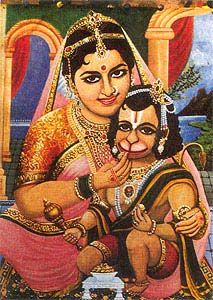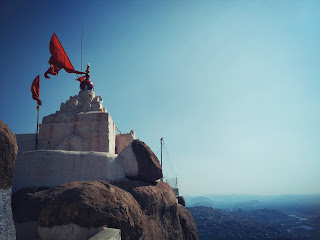In the sacred precincts of Shree Khetra, Puri, a tender and profound ritual unfolds every year Anasara, a fortnight of divine rest and rejuvenation. It is a time when Lord Jagannath, along with his siblings Balabhadra and Subhadra, withdraws from public view, mirroring the gentle vulnerability of human healing.
The observance begins with Snana Yatra, the ceremonial royal bath on Jyeshtha Purnima. During this festival, the deities are bathed with 108 pitchers of holy water mixed with turmeric, sandalwood, and fragrant oils. Though the ritual is majestic, it is believed to induce a divine "fever," prompting the need for seclusion and care. At sunset, adorned in Gajavesha (elephant attire), the deities retire to the inner sanctum, signaling the start of Anasara.
Anasara, meaning "unwell" marks a divine quarantine. The deities are moved to the Anasara Pindi, a secluded chamber behind bamboo screens. Only the Daitapati servitors hereditary caretakers are permitted inside, where they perform sacred healing rituals. For fifteen days, the deities remain hidden from public darshan, emphasizing that devotion is not bound to sight, but blossoms in faith and longing.
In place of physical idols, Anasara Pattis Pattachitra paintings of Jagannath, Balabhadra, and Subhadra are displayed for worship. These beautifully painted images represent the divine forms in their cosmic essence: Vishnu, Shiva, and Shakti. They become a spiritual anchor, reminding devotees that the presence of the Divine transcends physical form.
Within the Anasara chamber, Gupta Riti, or secret healing rituals, are performed. The deities receive Anasara Pana (a soothing milk-based tonic), Phuluri Tela (a fragrant sesame-oil balm prepared and buried a year in advance), and Dasamula Modaka (Ayurvedic herbal balls offered on Ekadashi). These rituals draw from ancient medicinal traditions, symbolizing holistic care for both the physical form of the deities and their divine essence.
Daily rituals continue even in seclusion. Mornings begin with Mangala Alati, followed by Abakasha Niti, which includes hymns, astrological rites, and offerings. Sakala Dhupa marks the first food offering of the day, followed by midday bhoga and a sacred rest period (Madhyana Pahuda). The temple breathes quietly through these rhythms, with servitors attending to the deities in hushed reverence.
As days pass, signs of recovery emerge. On Dashami, the deities are believed to regain strength, symbolized by Chaka Bije, where they are seated upright. On Khadilagi Ekadashi, a fresh coat of primer is applied to the idols, followed by Dasamula Modaka, signifying the peak of healing. These final days involve intricate painting rituals, preparing the deities for their public reappearance.
The climax of Anasara arrives with Nabajoubana Darshan, when the newly rejuvenated deities are revealed on Ashadha Amavasya in vibrant youth like form. This moment is met with waves of devotion, tears, and joy. Shortly after, the world-renowned Rath Yatra begins, carrying the divine siblings on grand chariots through the streets, welcoming all into their renewed embrace.
Anasara is not merely a ritual of withdrawal; it is a sacred teaching on healing, patience, and inner transformation. It reflects the belief that even the Divine takes time to rest, and that true devotion often grows in quiet absence, not just in vibrant celebration.
Spiritually, Anasara offers timeless wisdom: allow the soul space to heal, sit with silence, trust unseen growth, and when the time comes, emerge with strength and grace. It reminds us that just as Lord Jagannath returns radiant and renewed, so too can each of us journey through stillness to restoration.
As the deities rest behind closed doors, their presence does not fade it deepens. In that silence lies a powerful message: that devotion matures not only in presence but in longing, not only in rituals but in reflection. Anasara becomes a sacred pause a quiet celebration of care, renewal, and return.
Shri Jagannathaya Namah.






